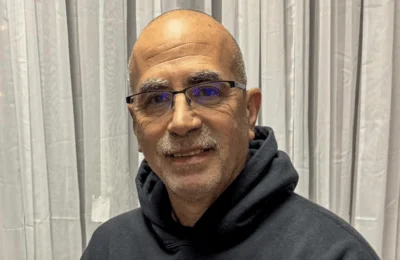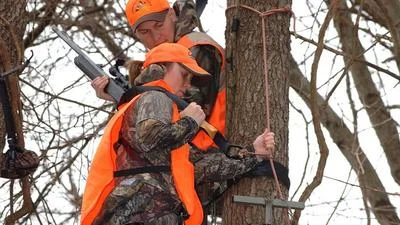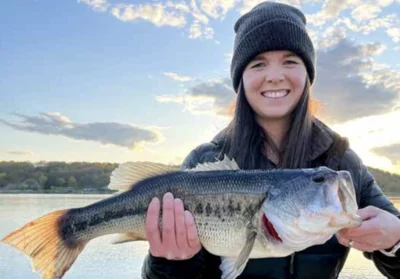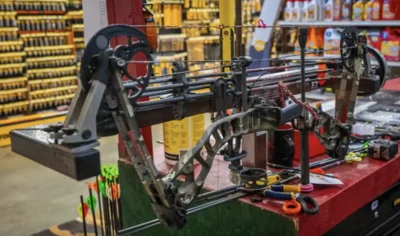Earlier this year, I found out about the “52 Hike Challenge” (52hikechallenge.com). I have been an avid outdoorsman for most of my life and thought this might be an excellent opportunity to get back into doing something I have always loved to do: spend time outside. I'll let you visit the challenge website for more information, but in short, for a hike to count, it has to be at least 1 mile outdoors. You can hike wherever and whenever you like, just as long as you complete 52 hikes in the calendar year.
Let me start off by saying, I am not a hiking expert, just a guy who likes to spend time outside and knows a thing or two about doing it safely. I have spent the last 25 years as a firefighter/paramedic, and now am an instructor for other firefighters and emergency medical technicians, as well as specializing in technical rescue and wilderness medicine. I am also a Scouts BSA volunteer and teach wilderness first aid for Scouts going to the various High Adventure bases throughout the United States. This has taught me a lot about hiking safety, so when I decided to take on the 52 Hike Challenge, this knowledge helped me out immensely. Additionally, I found myself beginning this challenge in, let’s just say, not the greatest shape, so doing this, and doing it safely, is a big priority.
This series will not only cover some of the things you need to know about hiking and hiking safety, but will also cover some examples of great hikes in our local area that you may or may not know about. There are literally hundreds of miles of amazing hiking opportunities in Knox and the surrounding counties. Additionally, Ohio's many state and national parks and forests other offer so many great opportunities for day trips, weekend excursions and vacation destinations, that one could complete the aforementioned challenge without ever leaving.
Let’s start off the series by covering some of the basics of hiking and hiking safety, and what you will need to get started. So, what is hiking? By definition, a hike is a long walk in the outdoors. As with any other outdoor recreational activity, the first thing you need to consider is your health and safety. Recognizing your physical abilities and limitations are the first step in getting into and enjoying hiking. Always begin any new physical activity by checking with your doctor or another medical professional first. Starting out slowly and working your way up to longer and more intense adventures will help you enjoy more and hurt less. Remember it’s a hike, not a run. Take your time, enjoy being outside, stop and smell the smells, see the sights, and listen to the sounds.
Now let’s talk about what gear you need to get started. Hiking, like any other outdoor activity, can be as expensive or inexpensive as you would like, but there are a few things that you should consider investing in. First, good quality hiking footwear. Your feet, and their comfort, will play a big part in your hiking experience. The two biggest things to consider with footwear are fit and function. If you are going to be hiking some technical terrain such as mud, ice and slippery rocks, then traction is going to play more of a factor than if you are taking advantage of the miles of paved trails our local communities have to offer. My advice is if you are going to spend money on anything right off the bat, get good quality, comfortable hiking footwear with traction that fits your needs.
Second, consider your wardrobe. You want to be comfortable in the outdoors, but remember, you also want to be functional. Early Spring is one of the greatest times to explore the outdoors in Ohio, but thinking about your adventure before it begins will make it much more enjoyable. Dress in multiple lighter layers rather than heavy or bulky layers so as your hike progresses, you can add or delete a layer to remain comfortable on the trail.
Third, use a comfortable pack to store and carry some essential items. Your pack, much like your shoes, should be comfortable and functional. There are a few items you will always want with you on the trail, like water, a first-aid kit, some food, a flashlight, and a means to signal for help, and we will discuss these items more in more detail later, but having a comfortable, functional means to transport these items during your hike will add to your enjoyment.
Lastly, you’ll need a hiking stick. While not as important as the first few items, a functional means of enhancing your agility will make you much more comfortable on the trail. Again, much like the other items I've mentioned, your stick should meet your needs. I have an array of hiking sticks, from the aluminum and carbon fiber trekking poles I use for more technical terrain, down the wooden hiking stick, adorned with dozens of medallions from my hiking experiences, that I use more now as a display piece than an actual tool for hiking. Trekking poles are considerably more functional, usually lighter, and are often bought as a set, making them a better choice for longer hikes where weight is a consideration, or while traversing terrain where a little extra stability might be advantageous. They also often come with an assortment of attachments to adapt them to your hiking experience. Wooden hiking sticks are great for less technical terrain; they are most generally heavier, often rather difficult to pack, but can be very, very sturdy.
There are many retailers, both online and local, that offer a wide selection of the items needed to begin your hiking journey. I personally prefer retailers where I can look at things and try things out before I buy them, but your gear will be just that, your gear, so just be sure that you fit it to your needs. The only thing you really must have to get started is the willingness to get outside and move. Start small, dream big, be safe, and most importantly, get outside and enjoy yourself.







